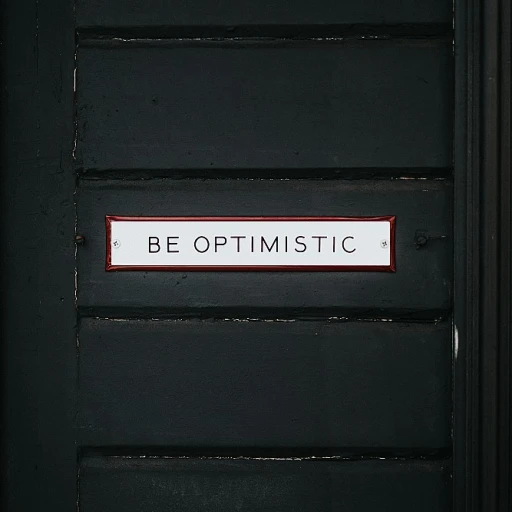
Understanding Creative Asset Management
Grasping the Essence of Creative Asset Management
In the dynamic world of entrepreneurship, understanding creative asset management is crucial for any general manager aiming to drive business growth. This concept revolves around the strategic handling of a company's digital assets, including images, videos, and other content that contribute to brand consistency and marketing efforts. By effectively managing these assets, businesses can ensure that their creative teams have the tools they need to produce high-quality content efficiently.
Creative asset management involves more than just storing files; it requires a comprehensive system that allows for easy access and version control. This is where digital asset management (DAM) systems come into play. These platforms provide a centralized location for storing and organizing digital assets, making it easier for teams to collaborate and maintain brand consistency across all marketing channels.
For managers, the challenge lies in selecting the right management software that aligns with their business needs. Features such as real-time collaboration, rights management, and integration with existing tools like Adobe Experience Manager can significantly enhance the efficiency of creative teams. A robust management platform not only streamlines asset utilization but also supports the broader objectives of the organization.
To delve deeper into how strategic management consultants can aid in optimizing asset management processes, consider exploring the role of a strategic management consultant in entrepreneurship. Their expertise can be invaluable in navigating the complexities of digital asset management and ensuring that your business remains competitive in a rapidly evolving market.
Identifying Key Assets in Your Business
Recognizing Your Most Valuable Creative Assets
Identifying key assets within your business is crucial for leveraging creative asset management to its fullest potential. Whether you are a manager handling digital assets or overseeing a creative team, understanding what constitutes an asset can make a significant difference in your brand's success. Here, we'll explore the diverse components that form the backbone of your business's creative assets.
Firstly, digital files such as images, videos, and graphics are undeniably valuable. These elements contribute to maintaining brand consistency and play a pivotal role in marketing strategies. Utilizing digital asset management (DAM) systems allows teams to access and share these assets efficiently, ensuring everyone has the necessary resources without delay.
Beyond the tangible digital files, other elements like an intuitive content management system or reliable management software serve as underlying support structures that facilitate seamless operations. These tools often come with features such as version control and real-time collaboration, which are indispensable for keeping all content up-to-date and cohesive across channels.
Creative and manager assets also include rights management mechanisms that safeguard your brand's intellectual property. Having clear guidelines and a robust management system can prevent potential legal issues and ensure compliance with any digital rights regulations.
Finally, an experience manager is integral to overseeing the flow and usage of creative assets. This role can coordinate with various teams to optimize the application of your organization's resources, ensuring that the brand's creative energy is effectively harnessed.
To delve deeper into how leadership can influence the way you identify and manage your business's most valuable assets, check out this insightful article on harnessing AI for effective leadership management.
Strategies for Effective Asset Utilization
Maximizing the Potential of Your Creative Assets
Effective asset utilization is paramount in enhancing business growth. It begins with an in-depth understanding of what creative asset management entails and recognizing its immense value in propelling your brand forward. Once identified, leveraging these assets strategically becomes crucial. Below are some key strategies to optimize asset utilization:- Diversify Content Usage: Creative digital assets like images, videos, and other content pieces play a pivotal role in ensuring brand consistency. Utilize them across various marketing platforms to maintain a cohesive brand message. This ensures that your brand's visual identity remains strong and memorable.
- Leverage Management Software: Utilize digital asset management (DAM) systems and management software to streamline the access, organization, and distribution of assets. Such tools enable creative teams to easily locate files, ensure version control, and protect intellectual property through rights management. This seamless integration boosts efficiency and reduces time wasted on unnecessary search.
- Adopt Real-Time Collaboration Tools: The synergy of creative teams can be amplified using real-time collaboration features. These allow teams to work simultaneously on projects, fostering a more dynamic creation process. Tools that include Adobe Experience Manager offer functionalities that facilitate seamless co-working experiences.
- Employ a Centralized Management Platform: A central system that supports all digital assets allows managers to monitor and manage resources effectively. This not only provides holistic oversight but also ensures that all teams have consistent access to necessary assets, enhancing overall productivity.
- Regular Asset Audits and Optimization: Periodic evaluation of your digital assets is essential. Determine which assets are performing well and optimize or retire those that are underperforming. This ensures that you’re making efficient use of your resources and continuously aligning with your brand’s objectives.
Integrating Technology in Asset Management
Leveraging Technology for Enhanced Asset Control
The integration of technology in asset management is pivotal in today's fast-paced business environment. With the surge in digital content and marketing efforts, businesses need robust management systems to efficiently handle creative assets. One key to success is implementing a dynamic Digital Asset Management (DAM) system, which allows companies to streamline access to critical resources such as images, videos, and brand assets. This ensures that teams can find and use the files they need in real time, significantly improving operational efficiency.
Effective asset management necessitates the utilization of advanced management software. Solutions like Adobe Experience Manager not only facilitate content organization but also enhance version control and rights management, ensuring that all digital assets are up-to-date and used legally. This technology also helps creative teams maintain brand consistency across various platforms and marketing initiatives.
Another technological feature to consider is the deployment of a centralized management platform. This platform serves as a crucial hub for managing digital assets, offering seamless access across teams. It incorporates various tools tailored to creative needs, ensuring that the team can efficiently collaborate and innovate without time-consuming processes. By using such platforms, managers empower their teams to focus on creative tasks rather than administrative burdens.
The adoption of a digital and creative asset management system also presents challenges, notably the need for technical training and adaptation. Managers must ensure that their teams are equipped with the necessary skills to leverage these technologies effectively. Moreover, ensuring seamless integration with existing systems and platforms is crucial for full functionality.
Challenges in Creative Asset Management
Overcoming Hurdles in Creative Asset Management
Managing creative assets effectively is crucial for any business aiming to maintain brand consistency and streamline its marketing efforts. However, several challenges can arise in this process, impacting the efficiency and effectiveness of asset management systems.
One of the primary challenges is the integration of digital assets across various platforms. With the proliferation of digital content, businesses often struggle to maintain a cohesive system that allows seamless access and sharing of files among creative teams. This can lead to version control issues, where multiple versions of the same asset exist, causing confusion and inefficiencies.
Another significant hurdle is the management of rights associated with digital assets. Ensuring that all content complies with licensing agreements and copyright laws is essential, yet it can be time-consuming and complex. This is where digital asset management (DAM) systems with robust rights management features become invaluable, providing a centralized platform to track and manage these rights effectively.
Moreover, the rapid pace of technological advancement means that businesses must continuously adapt their asset management strategies. This includes integrating new tools and software that enhance the capabilities of existing systems. However, the implementation of these technologies can be challenging, requiring time and resources to train teams and ensure smooth transitions.
Lastly, ensuring that all team members have real-time access to the necessary assets is crucial for maintaining productivity. Delays in accessing files can hinder the creative process and affect the overall output of marketing campaigns. Therefore, investing in a reliable management platform that offers real-time collaboration features is essential for overcoming this challenge.












